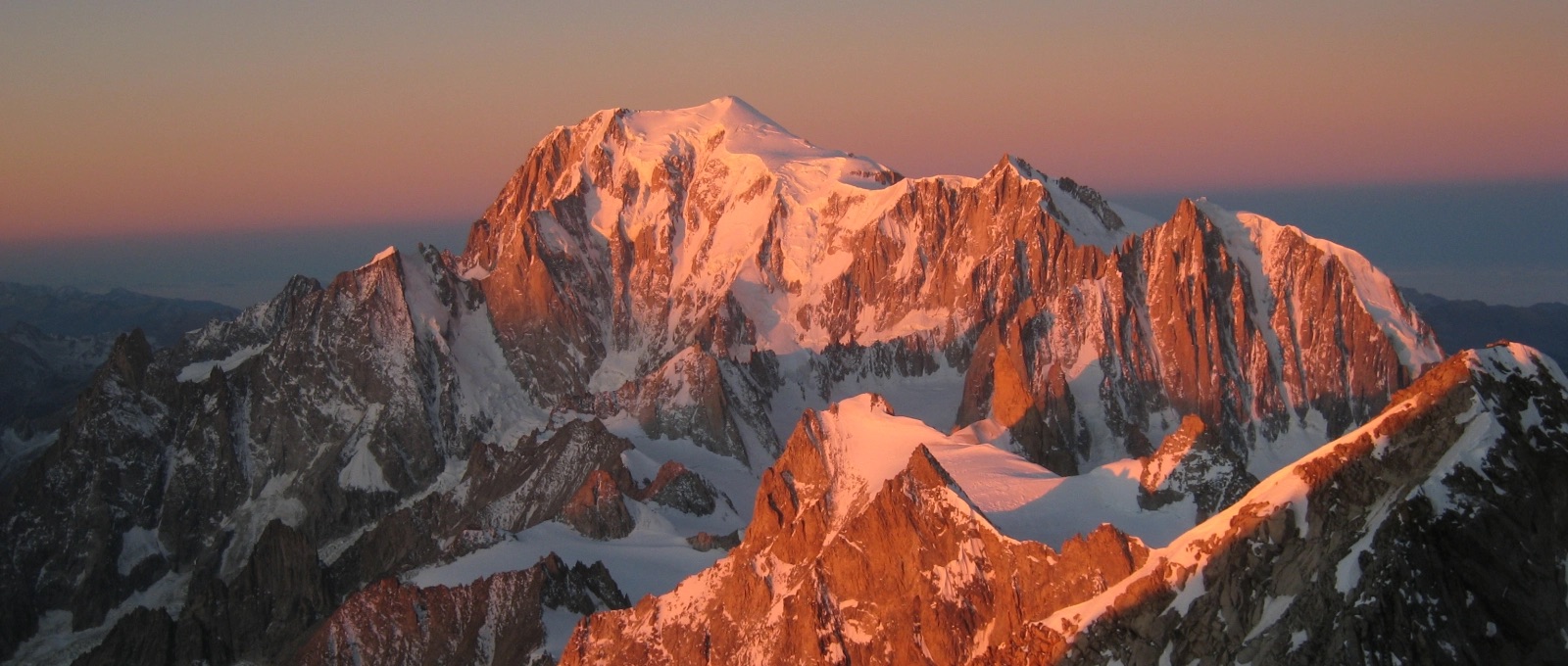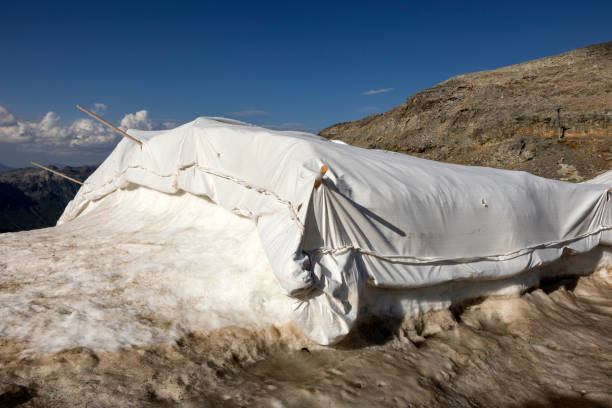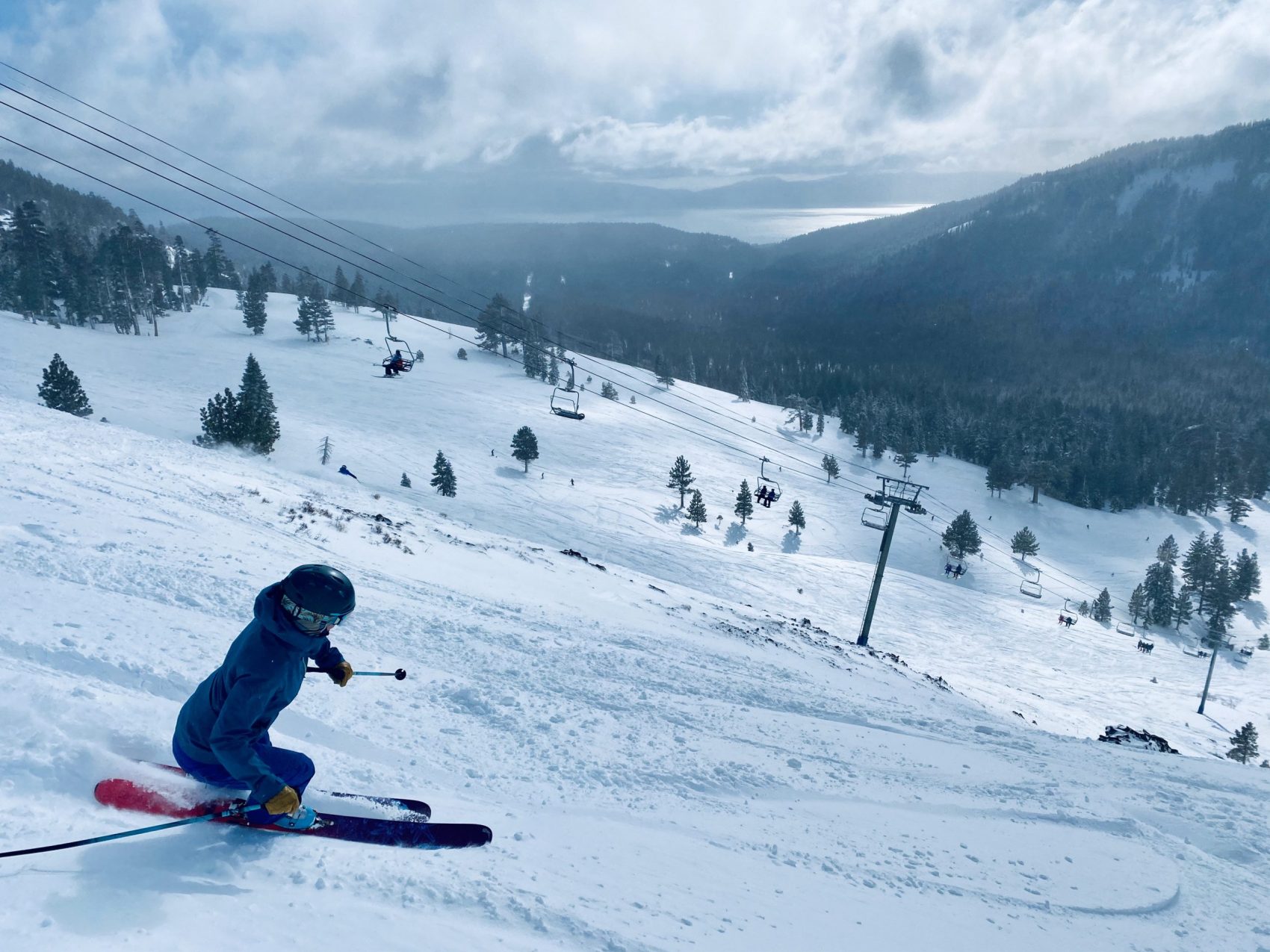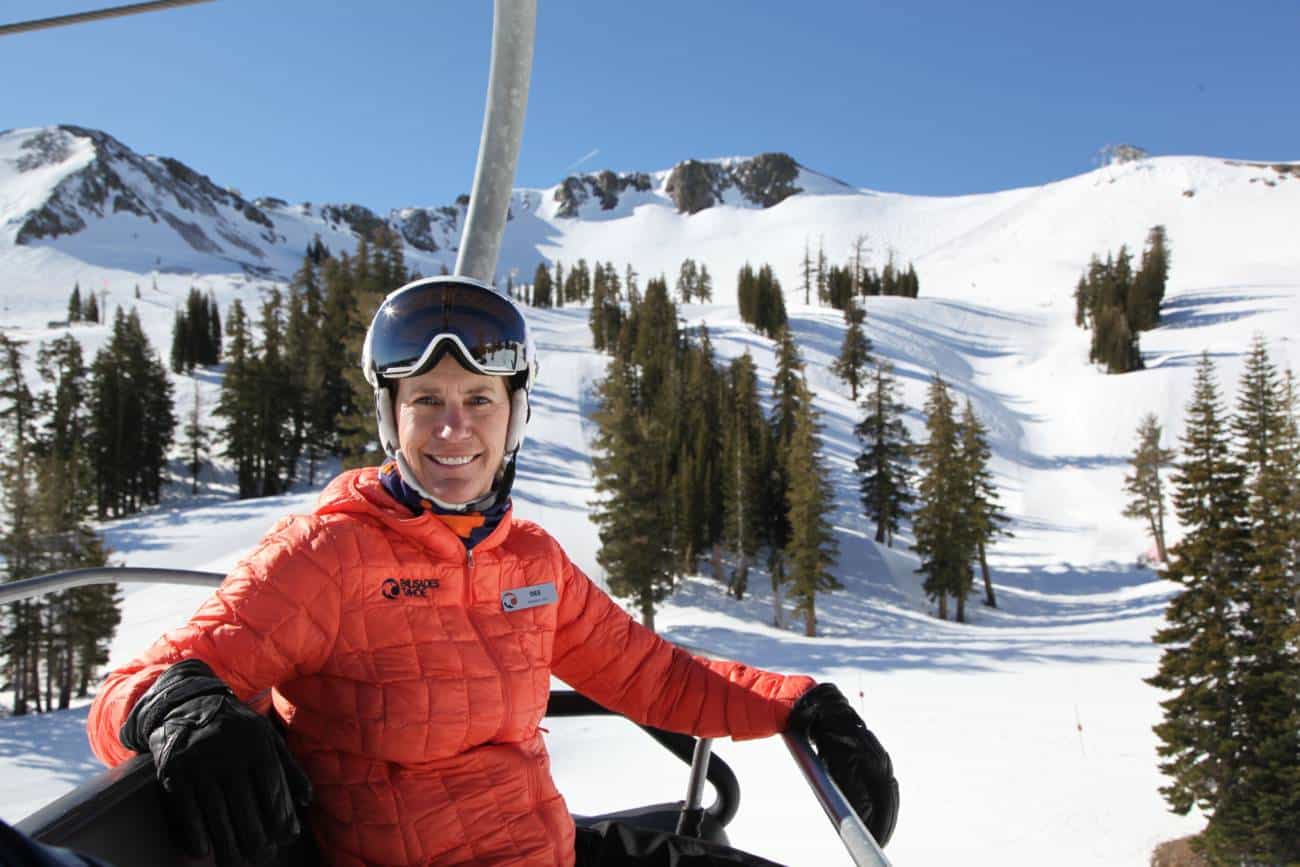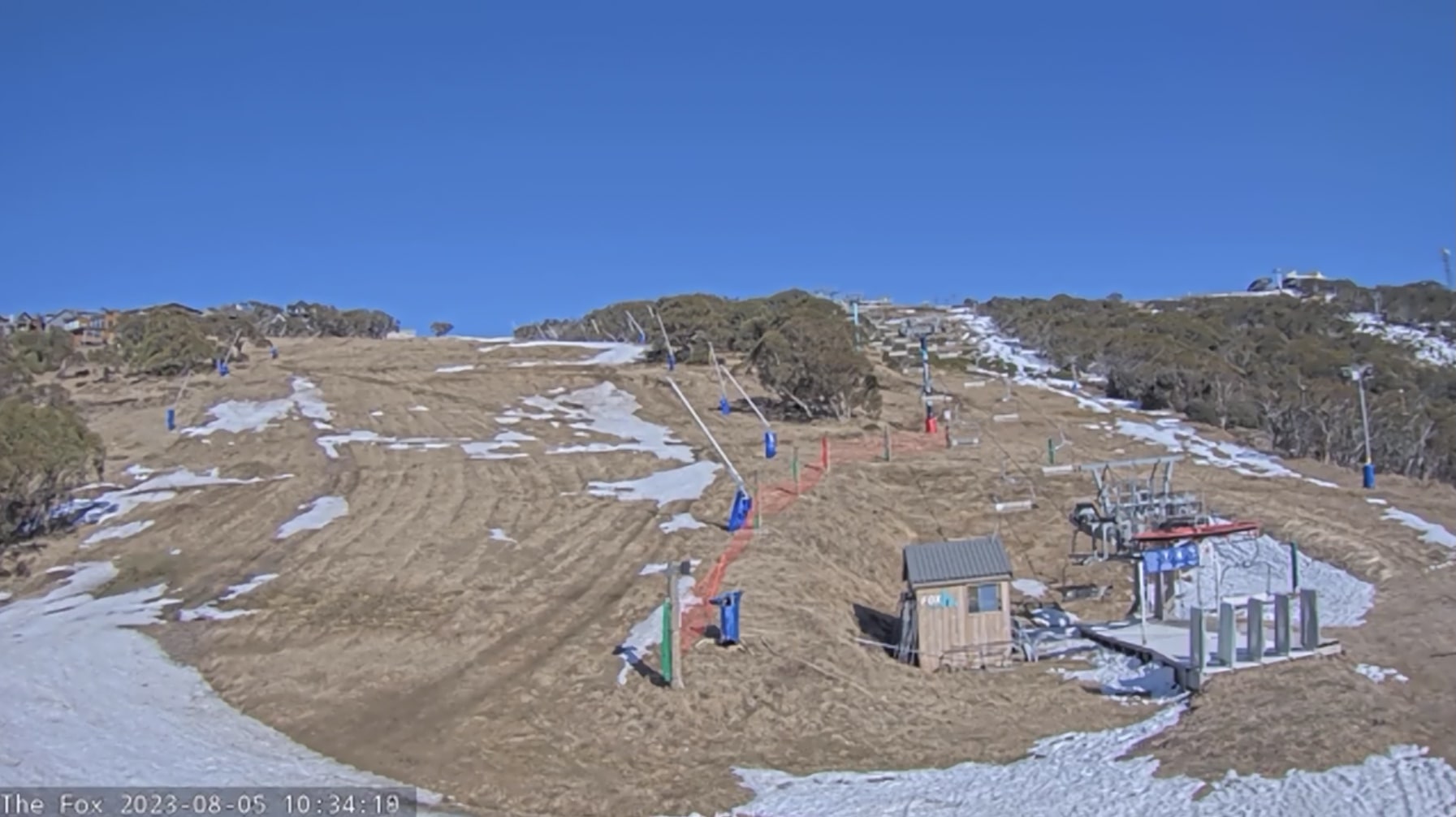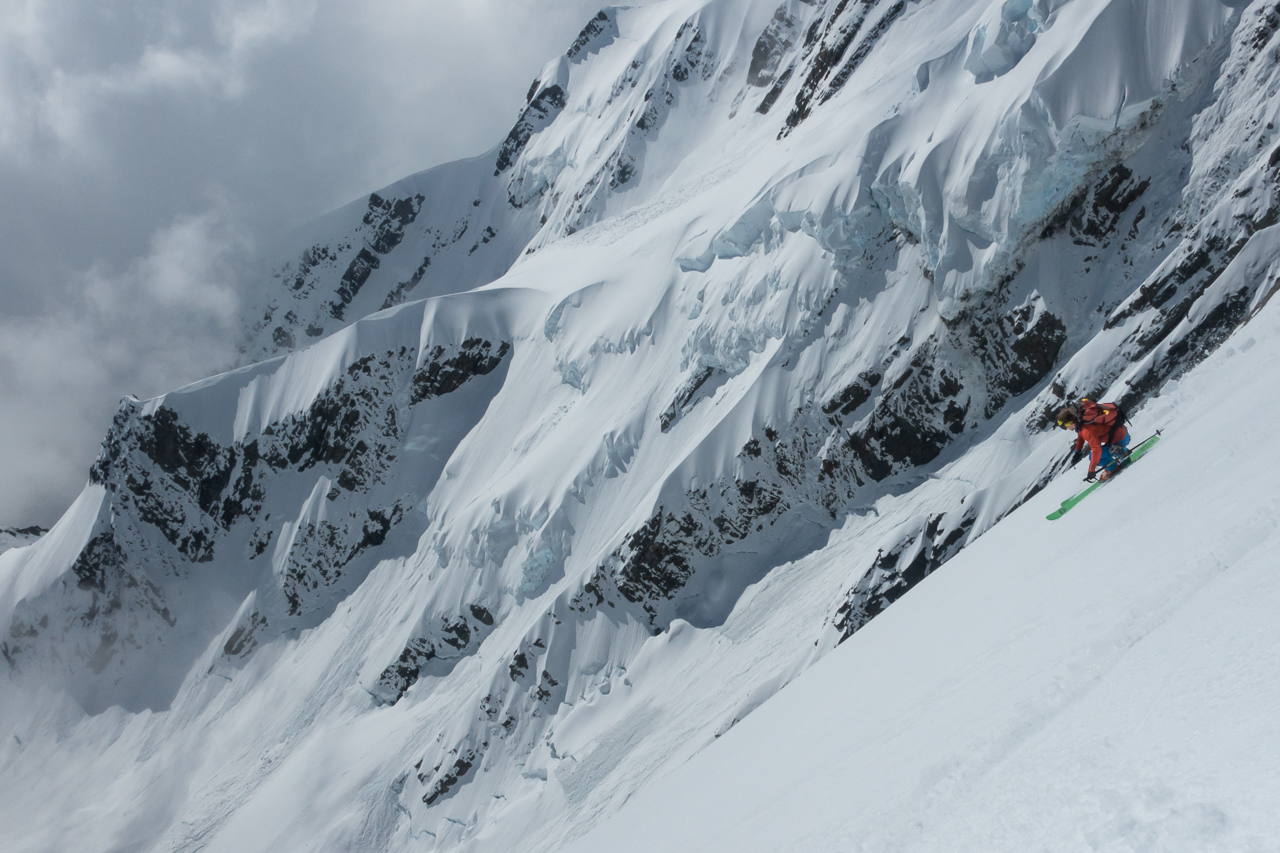
Ross Hewitt has been skiing steep lines in Chamonix for nearly 30 years. He has not just survived, but endured. In a place where mistakes often prove fatal, he’s found a way to consistently keep the most important aspect of free skiing intact: himself.
By all accounts, the odds aren’t in your favor. The slopes of the Mont Blanc Massif, the jagged spires and glaciated faces of Chamonix, are both legendary and lethal. Skiers who venture here chase transcendence on 50-degree pitches, down couloirs strung between seracs and rock bands, and across crevasse-riddled snowfields. But dancing in this kind of terrain with skill alone won’t suffice. Longevity on the world’s steepest, most dangerous ski lines comes through a culmination of factors and is practiced more like an art form than a physical discipline.
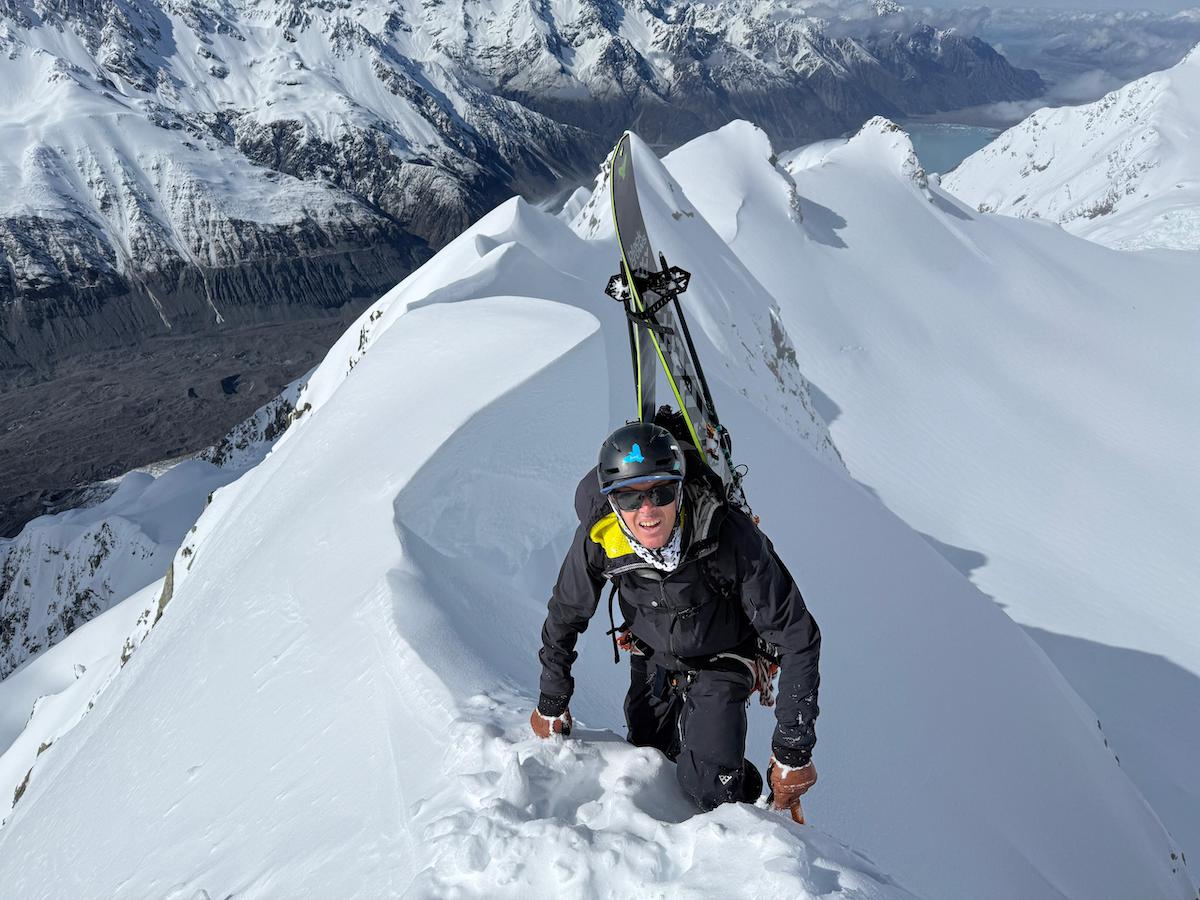
49-year-old Ross Hewitt, a longtime Chamonix mountain guide and ski mountaineer originally from Scotland, has been threading that needle for nearly three decades. He’s skied some of the most exposed and consequential lines in the range and has plenty of first descents under his belt. “I think you really need to stack the odds in your favor,” Hewitt says. “Because if you’re spending 200 days in the mountains every year, probability might catch up with you.”
That calculus is something he’s thought deeply about. Hewitt isn’t just a skier—he was trained as a subsea construction engineer, where risk assessment and systems analysis were part of the job. That mindset now informs how he approaches every line, every decision, and every client he takes into the mountains.
“In engineering, you’re trying to reduce risk to as low as reasonably practical,” he says. “So when you go operational, you’ve done everything you can do. I try to bring that approach into guiding.”
And it works. Hewitt is among the few who have not only survived Chamonix’s steep skiing scene but actively thrive in it; he literally sustains a way of life through guiding others through it.
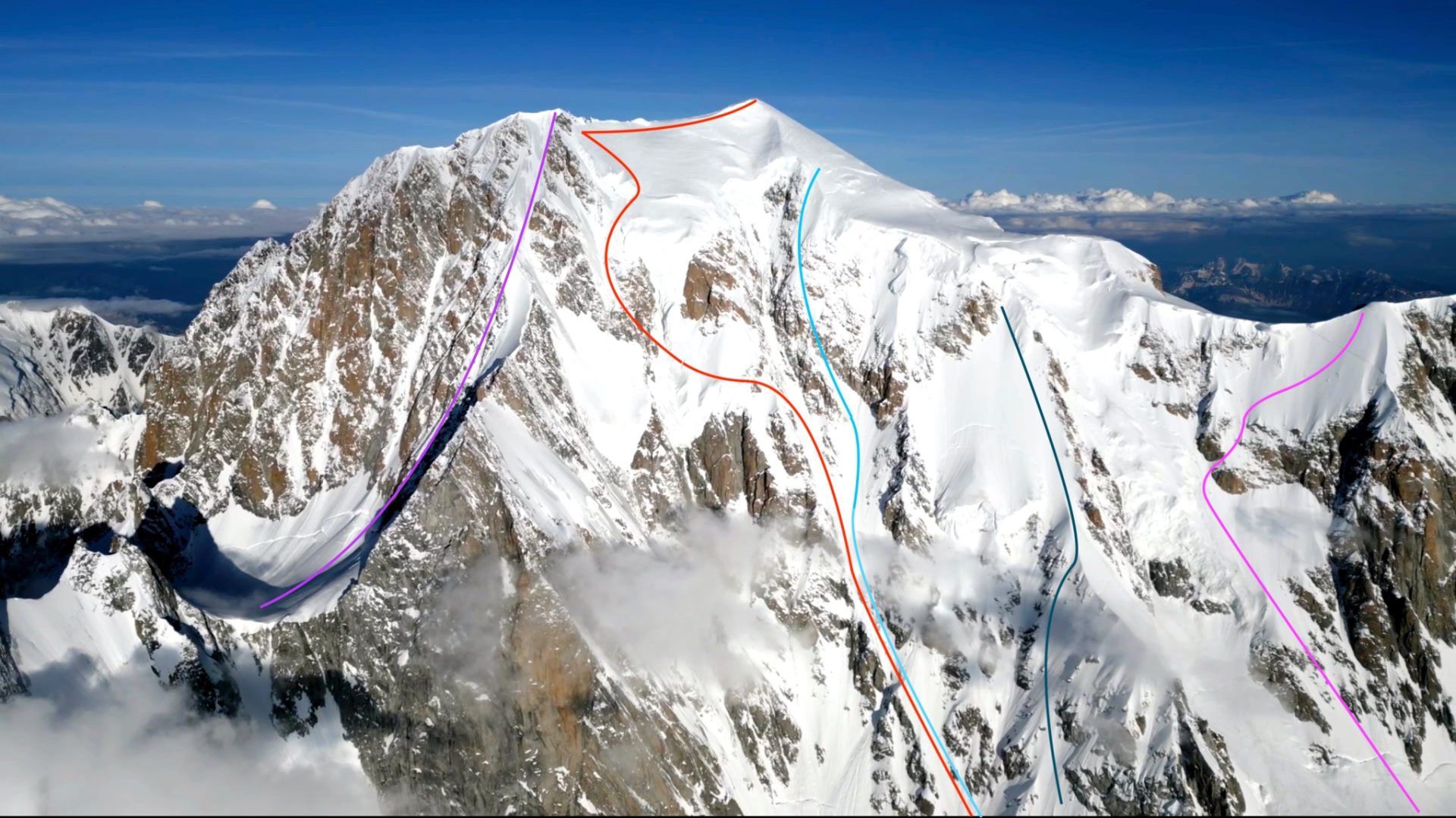
Culture of Consequence
In Chamonix, the culture surrounding risk is different. Skiing here isn’t about sidecountry powder or easy laps. Many of the classic lines run over glacial ice, end in seracs, or demand rappels between ski turns. The exposure is not hypothetical. People die skiing here on any given day of the winter and it is not surprising news to the local population.
“You fall on some of these lines, you’re dead. That’s it,” Hewitt says. “There’s no in-between.”
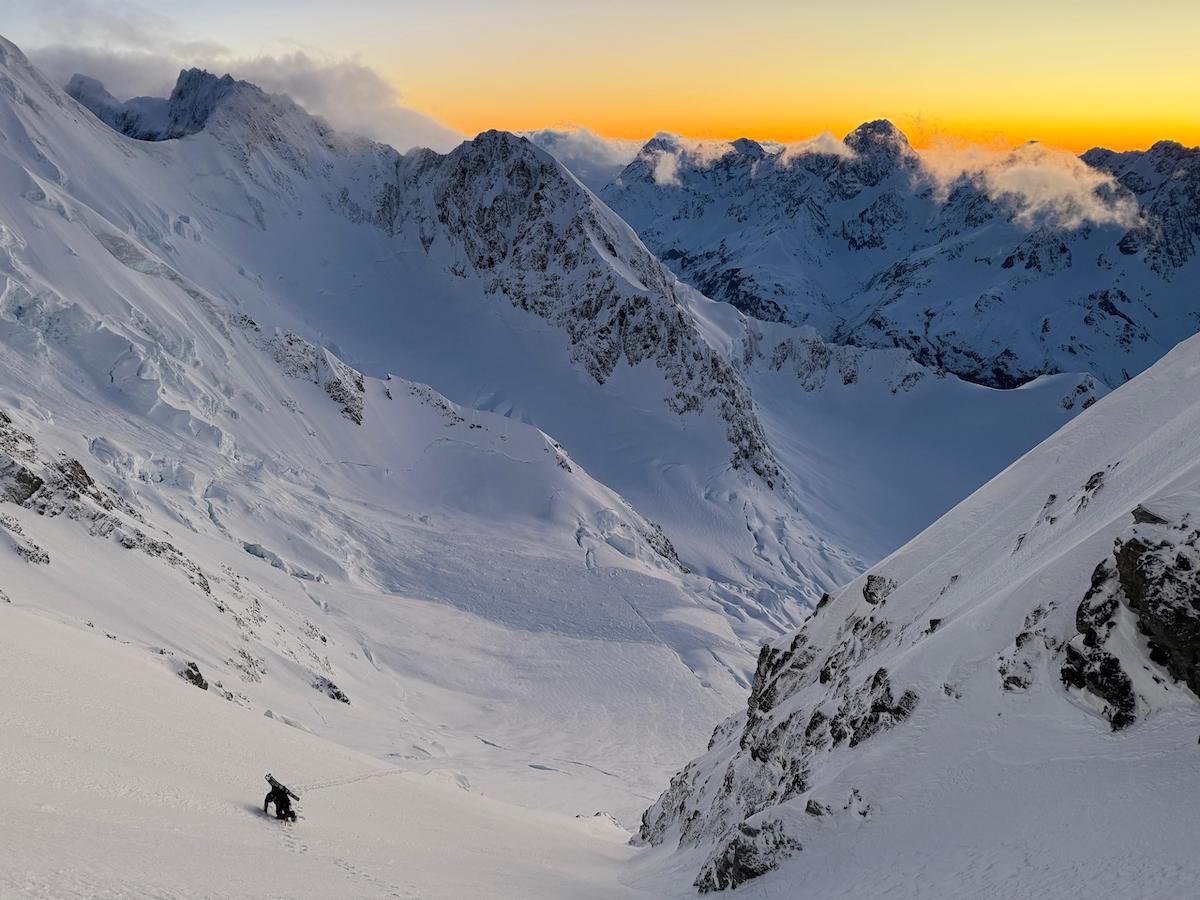
This is not hyperbole: the margins in steep skiing are razor-thin, and the consequences for error can be immediate and unforgiving. In Chamonix, where the mountains rise violently and the exposure is often absolute, even the most accomplished athletes have suffered catastrophic falls—some surviving by luck, others not at all. The terrain leaves little room for hesitation, and even less for miscalculation.
“I’ve lost more than 150 people I’ve known pretty well,” Hewitt reflects. “Skiers and alpinists. Some were close friends.”
Among those Hewitt lost is Tof Henry, a revered local known for his aggressive, fall-line style and deep dedication to big-mountain skiing. More than a peer, Henry was a close friend and frequent ski partner of Hewitt. Together, they navigated the same high-stakes lines that have come to define Chamonix’s legend. His death in 2023 was a gutting loss for Hewitt and the wider mountain community. Yet, the skiing continues. And for many, so does the search for mastery over terrain that can never fully be tamed.
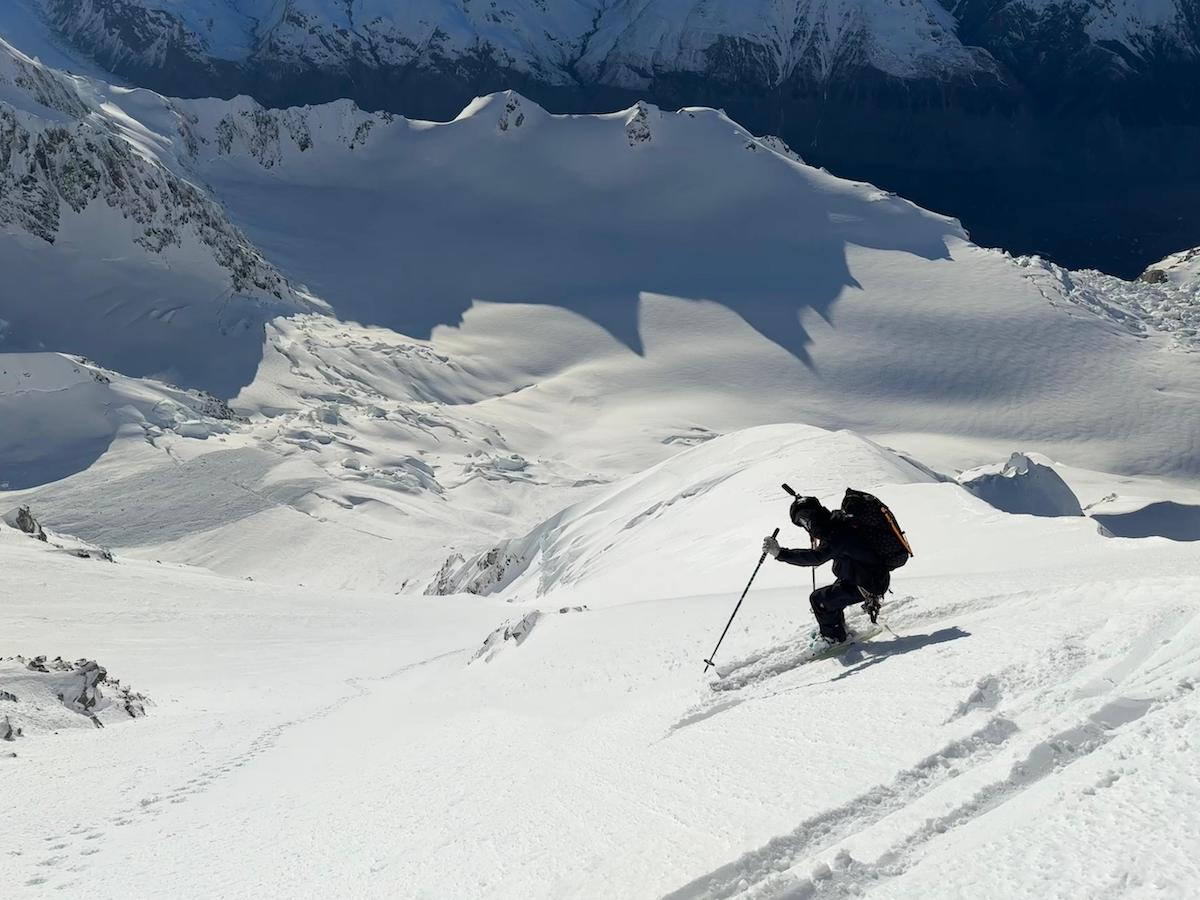
The Longevity Equation
What sets someone like Hewitt apart? It’s not just talent. It’s restraint and discipline. “You get people who are incredible skiers, but they come here and they ski too fast,” he says. “You have to know when to go at 60%. You can’t just charge everything.”
Hewitt describes longevity in steep skiing as a composite of many skill sets. Fitness matters, yes. So does technical ability, snow science, ropework, and navigation. But above all is terrain management: knowing where to stop, where to fall, where not to be when something cuts loose. “Snow is a dark art,” he says. “You can study crystals all day, but it’s more important to study terrain.”
He’s seen it play out again and again: skiers coming to Chamonix with strong backgrounds but no psychological adaptation to true exposure. “They look at YouTube videos and think, ‘Oh, that doesn’t look so bad.’ Then they get to the cable car and realize, ‘Holy f—.'”
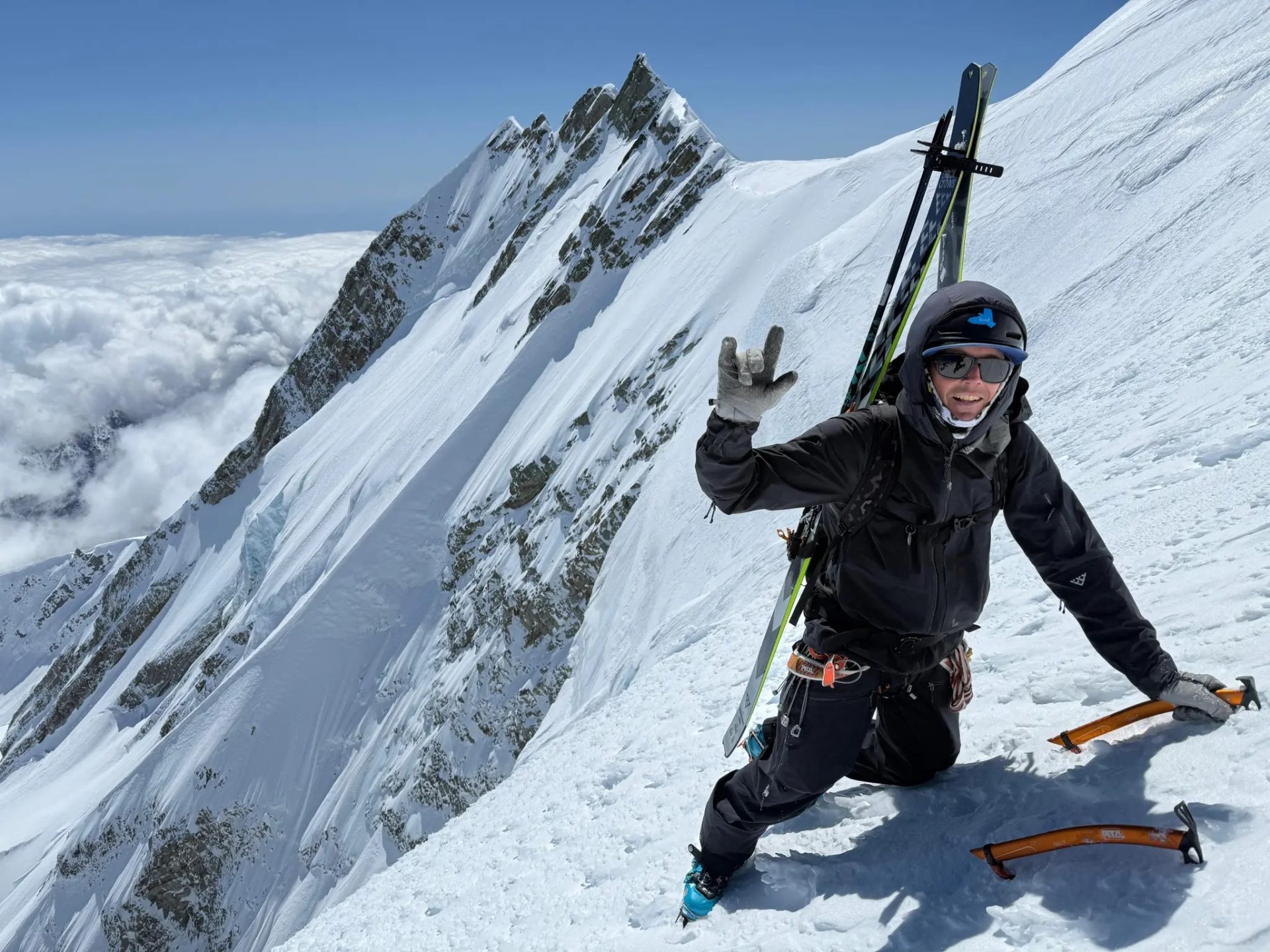
Knowing When to Walk Away
Turnaround decisions are part of the game. More now than ever, Hewitt relies on data, intuition, and community input to make his calls.”We have a WhatsApp group that shares conditions constantly,” he explains. “That kind of info wasn’t around ten years ago. It helps.”
Sometimes the call is made halfway up a face. Sometimes it’s before the lift even opens. “You look at something like the Brenva Face,” he says. “You’re not just deciding whether to go. You’re deciding whether you can move through a massive serac zone fast enough to not get taken out. That’s how critical timing can be.”
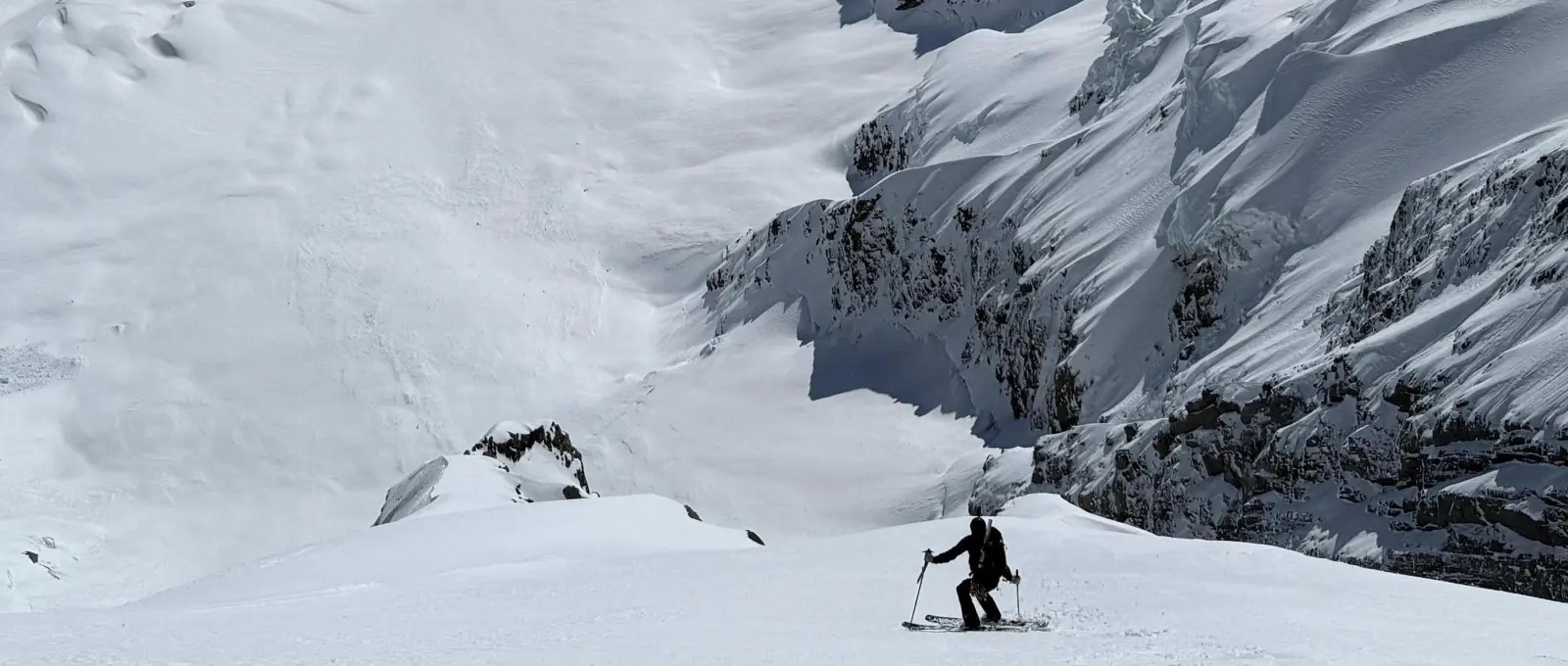
From Risk to Flow
So why do it? Why keep skiing faces that could so easily kill? For Hewitt, it’s not about adrenaline or ego. It’s about flow. And the reward of doing something extraordinarily well. “I’m not doing things just to tick boxes,” he says. “I want to ski lines when they’re good. When the snow is soft, the turns are fluid, the whole thing has rhythm.”
The best lines, for him, are aesthetic, logical, and safe enough. Not dry skiing over rocks. Not scraping turns on ice. “If you’re dry skiing and putting the tails of your skis into snow, it loses the point. I want to be making real turns.”
That ethic shows in his descents. The high-profile ones—Sentinel Rouge on Mont Blanc proper, Dragon’s Back in the Southern Alps of New Zealand, or the hidden corridors of the Mont Blanc massif—are notable not just for their difficulty, but their style. “When it’s right,” he says, “it all connects. The skiing becomes poetry.”
Risk Is Real
Hewitt does not romanticize risk. But he doesn’t hide from it either. Chamonix is not like an American-style ski resort where everything is roped off and risk-managed by ski patrol. The glaciers are real. The seracs fall. You make your own life or death decisions daily.
“You don’t have to ski every day,” he says. “It’s like going into battle. You choose your battles carefully.” Hewitt says his risk tolerance hasn’t changed much since becoming a father. But his priorities have. The goal now is to ski well, ski smart, and keep skiing. “I want to be skiing when I’m 60,” he says. “Not burned out. Not broken.” That means choosing descents for the right reasons. Avoiding routes that require excessive rappelling, or days that feel like chores. “I want good snow. I want flow,” he says. “Not a sufferfest.”
The Blueprint
For anyone hoping to make a life in big mountains, Hewitt offers no easy answers. But his story is a kind of blueprint: start small, respect the process, learn to love the craft. “You can’t just jump to the big stuff,” he says. “There’s a psychological component that takes time. Years.”
And maybe, over time, you develop the sense for when to go and when to stay home and chill. For when to send it and when to listen attentively to the voice saying, “Not today.” That voice—sometimes faint, other times screaming—perhaps, is what keeps you alive in steep terrain.
